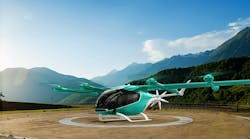By Ron Storm
With the proliferation of commercial off-the-shelf (COTS) products being offered for military use since the 1990s, it is all too easy to be lulled into believing that COTS products are always the most economical. That is not always true.
For more than a decade, the U.S. Department of Defense has stressed the need to use COTS components wherever possible, as a way to reduce total cost of ownership of military systems. However, because military systems are typically required to have a service life of 20 years or greater while being subject to the extreme rigors of shipboard, airborne, and mobile military applications, standard COTS products that appear to be satisfactory at first may not readily meet the longevity requirements and rugged performance specifications for the task at hand.
Modified COTS
In the case of power supplies, ruggedized COTS products with some necessary modifications can be the ideal solution. They still are delivering the cost benefits and streamlined development time of a standard COTS product, but with the features and performance necessary for military applications.
Modified COTS power supplies from qualified vendors have delivered the value and performance required by all branches of the military, in a broad range of applications and systems. The right power supply vendor will have significant design engineering experience with power supplies for military applications, and whenever necessary will take a partnered approach with armed forces managers, prime contractors and system integrators, to ensure that the modified COTS power supply precisely meets all performance specifications, on budget and on schedule.
A preferred approach to designing cost-effective modified COTS AC-DC or DC-DC power supplies is to use standard DC-DC modules (COTS “bricks”), along with the necessary circuitry and mechanical and thermal design considerations to meet the specifications. This approach significantly reduces non-recurring engineering (NRE) and associated costs, as well as reducing turnaround times.
The importance of choosing the right vendor for this approach cannot be overstated. For example, some power supply manufacturers advertise power densities in excess of 70 watts per cubic inch. Unfortunately, upon closer inspection, you’ll find that the manufacturer’s data also shows that the advertised power density is only achieved at moderately low temperatures and at a specific input and output voltage. Oftentimes the advertised power density figures do not account for additional necessary components needed to meet the complete power system specification, and the result is an overall power system power density of between 10 and 15 watts per cubic inch—much lower than the advertised 70 watts.
When choosing the right power supply, there are several issues that need to be considered to ensure a reliable design that meets all specifications (as well as meeting all advertised performance parameters). Consulting with the vendor, you should be able to arrive at the answers to questions such as:
- which standard module is best suited for the application at hand;
- what needs to be done to meet EMI requirements of MIL-STD-461;
- what needs to be done to meet hold-up and transient requirements of MIL-STD-704;
- what needs to be done to meet MIL-STD-1399 requirements;
- should conduction or convection cooling be used to meet temperature requirements;
- do the power supplies need to be paralleled;
- is redundancy and N+1 required;
- which control circuits are necessary;
- and is built-in test (BIT) required?
In addition, the power supply vendor should be able to specify the inclusion and impact of such elements as protection circuitry, filtering, monitoring and control, environmental conditions, and the physical size and weight of the finished power supply, in order to produce a reliable power supply meeting all system and environmental requirements.
AC-AC power supplies
A similar approach applies to designing modified COTS AC-AC power supplies and frequency converters. With standard “modules,” input, inverter, output and control circuitry, mechanical, and thermal design considerations specified (as well as the aforementioned questions answered). Additional important considerations for AC-AC power supplies and frequency converters include:
- input harmonics to meet MIL-STD-1399 requirements;
- output THD (total harmonic distortion);
- whether to use fixed or variable frequency and voltage;
- and load Power factor.
These approaches to designing modified COTS power supplies are supported by the Office of the Assistant Secretary of the Navy, in the document “More Power for the Dollar: A Technical Guide for Price vs. Value (NAVSO P-3641A).”
The capabilities of what is possible in a modified COTS power supply for military applications are exemplified in several examples.
Having unexpectedly lost its power-supply vendor in the middle of a contract to provide MK119 fire-control systems for U.S. Navy Aegis ships, a Navy contractor needed a form-fit-function replacement power-supply solution. A modified COTS design with just a single minor modification met their needs.
The solution consisted of three multi-output 600-watt, N+1, hot-swappable DC power supplies in a 19-inch rack. Because the new power-supply system was form-fit-function compatible with the corresponding system manufactured by the previous vendor, the contractor was able to proceed with production of its MK119 Fire Control Cabinet system without costly design changes.
The Marine Corps needed a reliable ruggedized frequency convert that would be powered by a large diesel generator, and exposed to extreme weather conditions. A modified COTS three-phase 400 Hz to three-phase 60 Hz frequency converter in a stainless-steel housing, with sealed input and output connectors to make the unit impervious to the environmental extremes, met their needs. The unit is transportable, and features protective circuits such as input, short circuit, constant current, and thermal protection.
The Navy needed a ruggedized uninterruptible power supply (UPS) to be used on board the LHD Wasp-class ships. The UPS needed to be able to supply loads of 250, 450, and 750 watts with 30 minutes of run time, and also needed it to be as compact as possible, due to the limited space availability for shipboard systems. A modified COTS UPS meeting all performance specifications, in a package measuring 5.25 inches high and 12 inches deep with internal batteries for the basic UPS system, met their needs. Higher-power units use the same UPS but require either a 1U (1.75 inches high) or 2U (3.5 inches high) battery chassis to meet the run times.
The Royal Australian Air Force (RAAF) needed a power supply for a server onboard an RAAF airplane—one rugged enough to withstand the harsh conditions of airborne military applications. A modified COTS solution resulted in a low-cost, reliable switch-mode 700-watt multioutput 400 Hz AC-DC power supply, meeting all RAAF performance specifications.
The U.S. Air Force required clean, regulated 60 Hz power on board the RC-135 surveillance jet. The solution involved several modified COTS 7000 VA units in a single 10.5-inch-high (6U) rack-mount chassis. They are used to distribute ground throughout the aircraft from the available three-phase 400 Hz and need to meet MIL-STD-461E EMI requirements. The units are controlled and monitored remotely via RS-232 and are a rugged design to withstand the rigors of operation on a military aircraft.
The U.S. Navy needed a 25,000-volt DC power supply for a display. There are more than 3,000 systems in the field and the previous manufacturers were no longer in business. A new unit is required for replacement since parts are no longer available to repair the older units. This supply uses a COTS module along with specially designed monitoring, protection, and control circuits.
All power supplies are a complex combination of multiple design considerations dedicated to the unique requirements of the system they support. As complex as they may ultimately be, the design and manufacturing costs as well as time-to-production savings realized by utilizing modified COTS power supplies can be significant. Thus, in seeking to minimize total ownership cost while also maximizing performance, armed forces managers and system contractors are wise to partner with a power supply vendor that offers proven technical design expertise for military and industrial applications, combined with the ability to offer and implement a wide array of COTS technologies.
Ron Storm is vice president of sales and marketing at Behlman Electronics Inc. in Hauppauge, N.Y. A subsidiary of Orbit International Corp., Behlman provides standard, modified standard, custom, and COTS power solutions.


